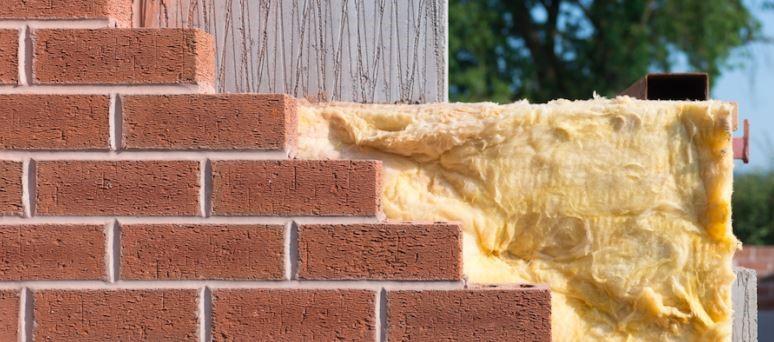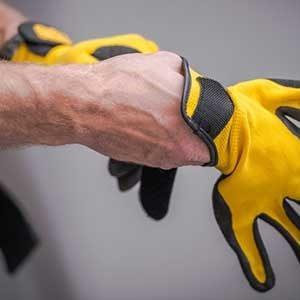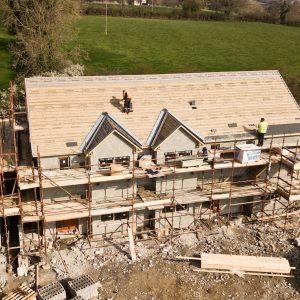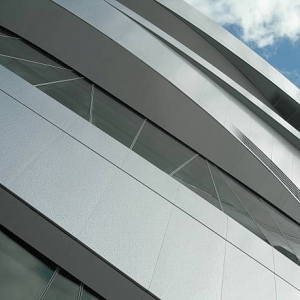Cavity walls have been used in the UK for almost a hundred years. They’ve become a staple in construction, and they have plenty of advantages over solid walls. Pretty much all homes built in the last century come equipped with cavity walls, and unless you have a home that was built in the last decade or two, chances are those walls are fully empty now.
Since cavity walls are so efficient at insulation, you might want to consider adding insulation to them, which will absolutely benefit you. They’ll keep your home warm in the cold winter months and cold in the hot summer months.
How to figure out if you have cavity walls
The first tell-tale sign if your house has cavity walls is the year it was built. If it was built before 1920, it’s certain to have solid walls. If it was built after 1920, it most likely has cavity walls, but it’s possible that it has been built with solid walls even after 1920.
A good way to determine what type of wall your house has is its brickwork. If it’s totally even, with the bricks laid sideways, it’s almost certain that it’s a cavity wall. But if it has an alternating pattern, and some of the bricks are laid across the wall, then it’s likely a solid wall.
If you can’t see the brickwork, then you should try measuring the width of the wall. If the brick wall has more than 260mm thickness, then it’s pretty likely that it has a cavity.
What exactly is cavity wall insulation?
The basic thing you need to know is that there are two types of cavity wall insulation, and those are full fill cavity and partial fill cavity. In each case, the insulation is done by using insulation materials, such as mineral wool, which is often considered the most popular choice. Its installation process is fairly simple because it includes drilling small holes into the outside walls, and then blowing material into the space until the wall is filled.
To finalise the insulation, you’re most likely going to need cavity boards, such as the quality Kingspan K108, which is a premium board that offers amazing insulation.
How long does the insulation last?
Pretty much everyone needs wall insulation. It’s one of the most important home aspects to keep in mind in the UK, and it’s done in order to prevent heat loss in the cold summer months. The whole insulation process takes very little time, especially if you’re doing it with the help of professionals. The time it takes to insulate an average-sized home can be as little as two hours, with larger buildings taking more, naturally.
Once you’ve insulated your home, you can expect it to function immediately. It works by trapping the warm air between the materials, which prevents it from circulating. This has the effect of providing a lot of insulation for the home.
The insulation itself can last a very long time. Once you’ve installed cavity wall insulation, it should work without a hitch for at least two decades, provided no external forces have deteriorated the wall itself. In some cases, it can last for even longer.
Benefits of cavity wall insulation
Initially, cavity wall insulation was used to waterproof buildings, with insulation only a secondary listed benefit. Nowadays, it’s the primary method to insulate homes in the United Kingdom, and not only that, but it’s also eco-friendly and very cost-effective.
The main and most important benefit of cavity wall insulation is reducing costs, especially costs that come from the energy bills. In many situations, cavity wall insulation pretty much pays itself after as little as five years because you’ll be saving a ton on heating. Once you start doing the math, you’ll immediately see why it has become such a massively popular way to insulate homes in the United Kingdom. The cost-reduction benefit is amazing, and the time it takes to install it is incredibly small.
Materials used for cavity wall insulation
There are quite a few different ways to go about insulating your home. This includes several different materials that you can use, such as:
Mineral wool
Inarguably, mineral wool is one of the most popular materials used in cavity wall insulation. There are even some services that pretty much specialize in mineral wool.
Furthermore, it’s a recycled material, namely recycled smelting slag, which is why it’s also considered eco-friendly. The material itself might not be very eco-friendly, but it’s considered as such because it’s recycled, and has a long lifespan.
It’s also very popular because of the array placement options when it comes to installing mineral wool between the studs. It’s incredibly easy to slide between the joists, it can be packaged tightly, and it can be also pre-cut to help with the installation.
Phenolic resin
Currently, phenolic insulation is considered to be the most thermally efficient insulation out there. It has a much lower thermal conductivity compared to the other insulation materials. As a result, it can provide an optimal level of insulation in a much thinner profile which is why the Kingspan K108 insulation board is such a sought-after option.
Furthermore, in this day and age when climate change has increased the risk of fires, phenolic insulation has exceptional fire performance. It reduces the spread of flames as it hardens and chars in fire situations. Also, it gives off very little smoke, unlike other insulation materials which create thick black smoke when burning.
Beads and granules
Another popular way to do cavity wall insulation is by installing beads and granules. It’s so popular because it’s a very efficient way to trap hot air, making it a very effective material for insulation. However, it’s not very eco-friendly, so if this is an issue for you, maybe you’d want to reconsider.
Beads and granules are also very versatile materials, as they can be supplied loose or in a sticky resin that holds them together. They’re also typically made out of polystyrene, making them a very cost-effective solution, as well.
Foam
If you were simply looking for the best thermal cavity wall insulation, you can never go wrong with foam insulation. It’s typically made out of polyurethane, and it’s often hailed as the single best insulation material for cavity walls.
The problem with foam is that installing it can be very difficult and tricky. That means you’re pretty much going to have to ask a professional to help you out, otherwise, you might increase the degradation rate of the foam if you don’t know what you’re doing.
The process that should happen is the polyurethane foam is injected into the cavity, as it’s a fluid-like material, and it completely expands and bridges the gaps inside the cavity. That means the insulation will be pretty much perfect and seamless, but the added effect is that foam is typically the most expensive type of cavity wall insulation.





